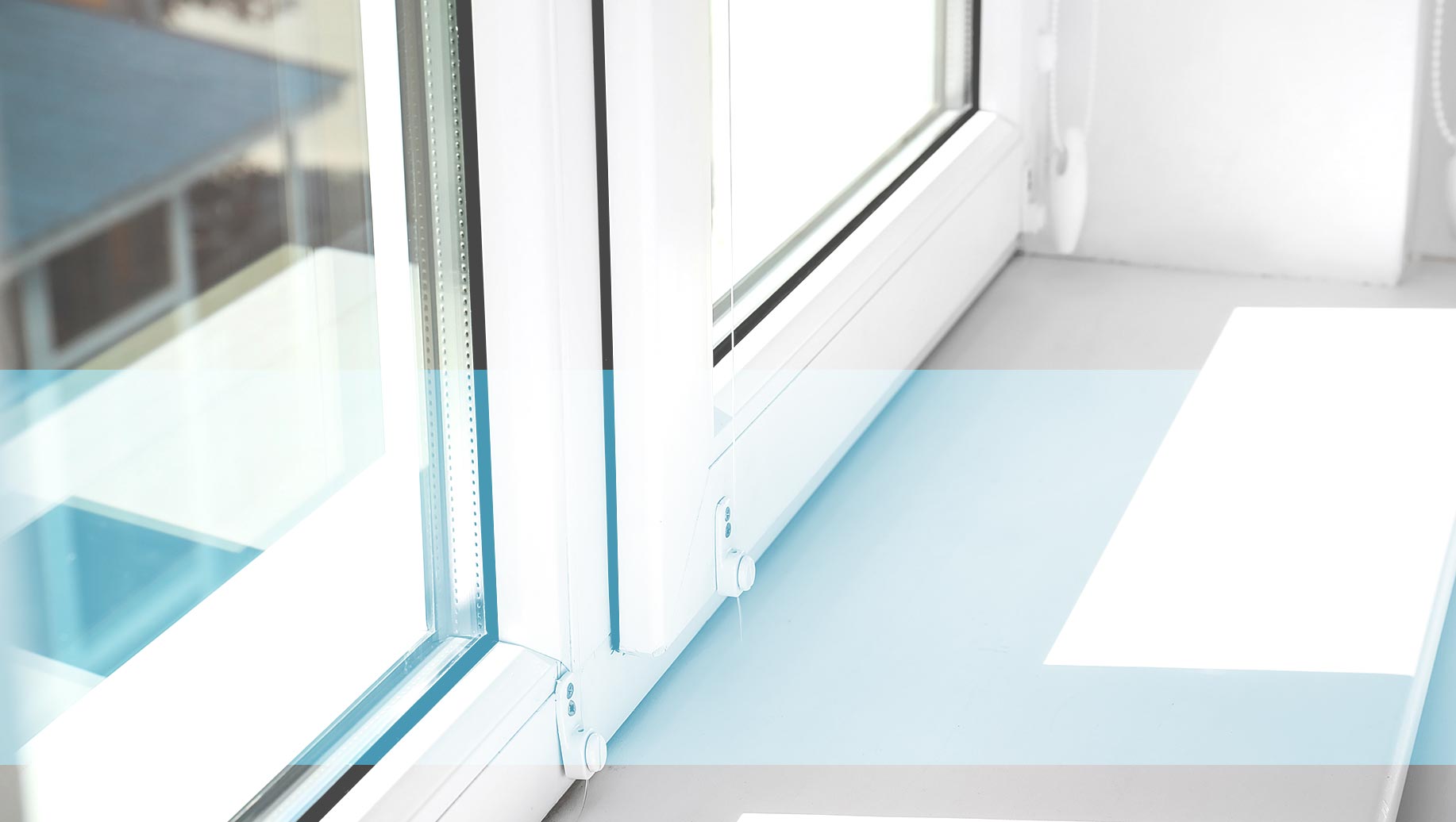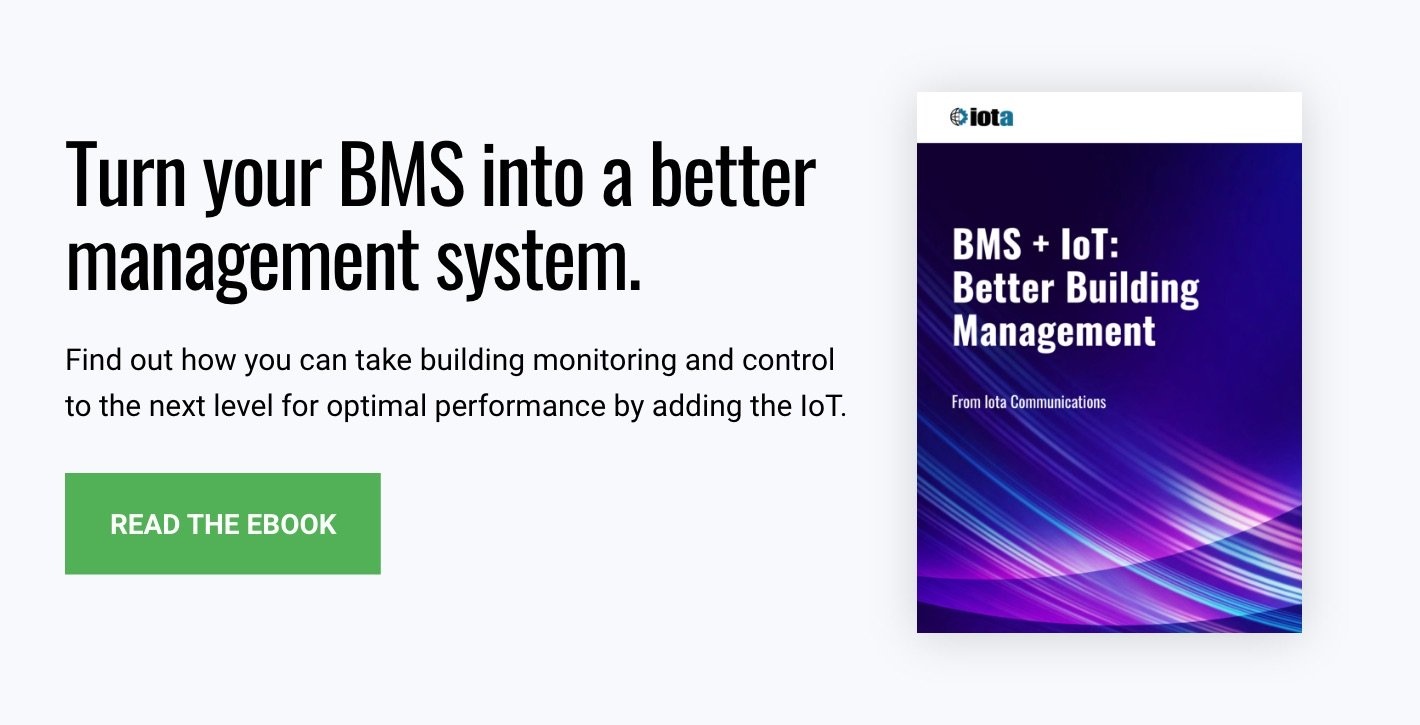Though the term smart building has been in use for some 30 years, smart facility management has become “smarter,” less expensive, and easier to implement by orders of magnitude over that time.
One of the earliest smart facilities management solutions—and one that’s still being used today—was the building management system (BMS). BMS systems were a game-changer in the early days; today, yet another evolution has occurred: the Internet of Things (IoT). Even if your facility has a BMS in place already, that doesn’t preclude you from taking advantage of the IoT—it just means you can greatly increase the “intelligence” of your legacy system.
[bctt tweet=”Even if your facility has a BMS in place already, that doesn’t preclude you from taking advantage of the IoT—it just means you can greatly increase the “intelligence” of your legacy system.” username=”iotacomm”]
In this article, we’ll look at some of the ways IoT technology is being used to make buildings “smarter”—maximizing energy efficiency and comfort for building occupants while also reducing building operation costs.
Smart Facility Management: Practical Applications
As smart building facility management has evolved, the net effect has been that systems control has become more granular. Where a BMS, operating alone, can manage systems for entire buildings or building areas, it lacks the data component IoT solutions provide, with real-time monitoring in many different areas of the building. This data allows much more targeted control of systems—down to the room, HVAC vent, and individual light fixture—so mechanical systems are only called into operation where and when needed. Thanks to the use of open internet protocols in IoT devices, this data can also be easily cross-referenced to give managers a better overview of system interactions.
Want details on how you can leverage IoT data for greater efficiencies? Download this free white paper to read about two IoT energy efficiency strategies building managers are using today.
Some of the smart building management solutions IoT technology offers include:
- Carbon dioxide monitoring improves indoor air quality by using sensors to detect when CO2 levels increase, which can have a negative impact on occupants. The sensor will send a signal to increase airflow to the area. These are particularly useful in conference rooms or other enclosed spaces where groups of people gather and spend long periods of time together. CO2 sensors can also be used to regulate the amount of outside air intake to match actual occupancy levels (ventilation on-demand, essentially). Such a system reduces the work for heating and cooling systems, and reduces your energy consumption—sometimes by as much as 20%—by not having to cool or heat as much outside air as previously determined.
- Temperature monitoring can be done in multiple locations, not just at thermostats. If there is a cold spot near a window where a person sits or works, a sensor can signal a variable air volume (VAV) box in the area to supply more heated air to the nearest air vent. In situations where strict temperature controls are required, such as for food or vaccine storage, this type of monitoring is a critical component of business operations.
- Daylight sensors on light fixtures detect the level of natural light available and adjust the brightness of lights in the immediate area. On an overcast day, these sensors may dim overhead lighting to provide just enough artificial light to supplement the available daylight, while on a bright, sunny day they will switch off lights in areas receiving adequate natural light. These devices save energy by providing only the level of light needed in each area at any given time.
- Cooling demand sensors allow individual HVAC compressor units to communicate current demand loads to one another and share refrigerant between air handlers. If a compressor that typically serves the air handler for a particular building zone is operating at 65% capacity, and another building area needs cooling in 25% of its zone, the compressor with excess capacity can share already-cooled refrigerant with the air handler for the second zone. This saves energy by running only one compressor until demand is sufficient to call another into service.
- Predictive maintenance & condition monitoring uses sensors to monitor building systems and equipment, providing real-time data about things like power usage, oil pressure, vibration, and other parameters. Continuous monitoring establishes normal operating ranges; when irregularities occur, maintenance staff can be alerted immediately to perform maintenance before a breakdown occurs.
Pairing IoT Sensors With BMS For Smart Building Facility Management
In some of the applications outlined above, IoT sensors can operate independently of the BMS, but there is value in pairing IoT devices with your BMS.
For example, if the facility manager wants to keep the building at 70 degrees on a cold day, IoT sensors can provide ratings to show how well the system is maintaining that temperature in all areas of the building. If the temperature keeps dropping to 67 degrees in some or all zones and can’t meet the target, the BMS will issue an alert—perhaps the boiler isn’t working properly, or an air handler in one zone is malfunctioning.
Want to make your building smarter?
If you’re interested in adopting a more proactive management strategy using the IoT, talk to us at Iota. Our solutions and services can help you modernize your data infrastructure, uncover areas of energy loss, and implement solutions that will not only save you money but also produce a financial gain.
Schedule a free discovery call with us to talk about your energy usage, the size of your facility, and your energy goals, and we’ll let you know how we can help.


